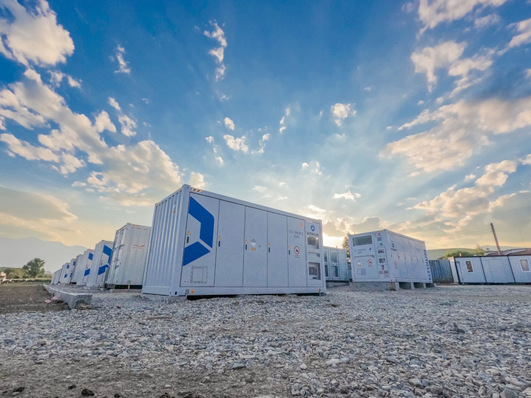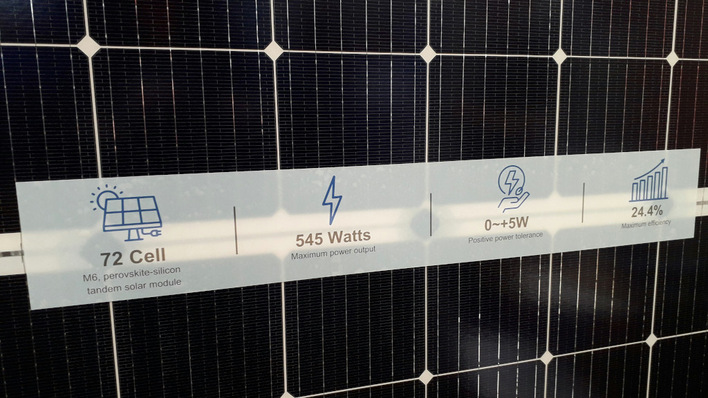

Solar power is cheap. The generators and solar modules promise at least 20 years of low-costs electricity and energy storage sytems are getting more and more cost-effective. But at the beginning of such lucrative self-reliance there is a price that has to be paid: The technician has to buy in the components for you, in effect giving you an advance. He then installs them as well, which creates labour costs. All of that adds up to a few thousand euros, which begs the question how you can secure such an investment against interruptions, faults, damages or wear and tear. Law courts may help to settle disputes, but that cannot make up for the pleasure of an efficiently working solar installation.
These are the 12 expert tips to secure your PV investment:
- Do not let the falling prices tempt you into becoming reckless!
- Better than any insurance is a solid installation company!
- Only buy brand-name products from European suppliers!
- Always install system packages, never mix and match!
- Hold the importer liable!
- Protect your investment by monitoring and regular maintenance!
- Make sure all provisions of the warranty are explained to you in detail!
- Run through what can go wrong!
- Make sure suppliers have provisions!
- Put your insurance company to the test!
- Find out about return and recycling!
- Leave installing and maintenance to the experts!
1.Do not let the falling prices tempt you into becoming reckless!
Per kilowatt of PV on the roof of your house, you will currently need to factor in about 1,200 to 1,500 euros (net). A well-planned and installed system can be expected to produce between 900 and 1,100 kilowatt hours per year per kilowatt of installed solar capacity (for Germany, Austria and Switzerland). Battery storage costs about 900 to 1,300 euros (net) per kilowatt hour of usable storage capacity (for stationary lithium storage units in the segment for small-scale domestic use) or 600 to 800 euros (net) for lead batteries. If we take a PV installation of five kilowatts and a lithium battery of four kilowatt hours, that comes to around 11,000 euros. Prices are falling rapidly, especially for energy storage, where there are lucrative subsidies.
Still, 11 grands are not small change. So before you make such an investment, it is important to find out about how to protect it from a legal standpoint. Because the energy storage unit is supposed to last ten years; the solar generator at least 20. A lot can happen in that time. So the first tip: Do not let the falling prices fool you! Look at any detail, and most of all, read the small print in your contracts! Back to top.
2.Better than any insurance is a solid installation company!
For your investment, better than any insurance is a solid installation company, which will design the installation for you, buy in the parts, mount them on your roof and put it into operation. Solid mean that the company has sufficient references both in electrical and heating engineering. It should be located in your area – personal contact usually helps to resolve any issues. Solid means: It needs to be highly probable that the company will still be in business in 20 years. A solid installation company will also be competent in advising you on financing through your regional bank and on insurance for the components of your installation. The TUV and insurance companies increasingly issue certificates for good companies. Keep an eye out for such quality labels! Back to top.

3.Only buy brand-name products from European suppliers!
Solid first and foremost also means: Your supplying company offers you brand-name products from reliable manufacturers. These should preferably be European brands and providers that have been certified by the TUV or other certificates. All documentation should be available in your language and all issues around warranty should be dealt with through companies that at least have branch offices in your country. It is no good for you to buy a cheap storage unit that stops working eight weeks after you got it. The closer you are to your supplier and the lower the language barrier, the better it is in case anything goes wrong. Because it is in the nature of technology to go wrong sometimes. And when it does: sad faces all round. Back to top.
4.Always install system packages, never mix and match!
Technically speaking, there should not be much to do wrong with a solar generator: solar panels, DC cables, inverter, connection to the electrics of the house and to the power grid. At least it would seem that way to an amateur. But it is a bit more tricky, especially if a energy storage unit is included (the most expensive part of the acquisition). And that is why the installation of solar generators and storage units is always left to the experts. But many technicians think so highly of themselves that they will assemble systems from components by different manufacturers: the solar panels from one manufacturer, the inverter from another and the batteries from a third. In doing so, however, they are walking on thin ice, legally speaking, because not all systems are compatible under all conditions.
And the warranty for individual components becomes void, if they are combined with others that they are not compatible with. Such provisions can be found in the small print of the delivery contracts for the solar panels, inverters or solar batteries. To be completely safe, it is best to get all technical components from the same manufacturer, in which case an overall warranty comes into effect because there is nothing the technician can get wrong or overlook. Praise be to the technician who is an enthusiastic tinkerer, but it is important to keep service to the customer and private pursuit separate. A proper system comes from a single manufacturer – and the same supplier. Mix and match has been and gone! Back to top.

Occasionally, solar panels or batteries are imported from Asia to be sold to European customers. It is important for the customer to know that the importer is automatically included in the product liability of the Asian supplier, even if they made no alterations to the products. So take a very close look at how solid the importer is. To them should apply the same kind of requirements as to the company installing the system in your house. Back to top.
6. Protect your investment by monitoring and regular maintenance!
Product liability and warranty apply to the properties of a product and possible defects. To secure your claims right from the beginning, it is important that the system is installed and commissioned correctly. This includes proper documentation with all of the necessary permissions and signatures. Regular inspections and maintenance of the technical components are also essential, because most defects become noticeable fairly quickly. But if there is not a professional system of monitoring, no one will notice a defect. It is not unusual for issues to be noticed too late – or not at all – when the manufacturer’s product liability and warranty are no longer valid. Back to top.
7.Make sure all provisions of the warranty are explained to you in detail!
There are warranties that go beyond product liabilities and manufacturer’s and importer’s warranties proscribed by law. These are a manufacturer’s promises concerning certain features of their products. For instance, manufacturer of solar panels will promise that they will only lose so-and-so much of their efficiency within a certain period. Or a supplier of storage units will guaranty that the battery will last for a certain number of (full) charging cycles. With batteries, a certain loss in storage capacity over the years is normal and is protected by warranties. In this context it is important to consider how much sense such promises make. Can they even be verified using the normal testing equipment of electricians? Back to top.
8.Run through what can go wrong!
Warranties are there to encourage sales, not to protect the customers. At least one might be lead to suspect that if one reads the small print of many manufacturers’ warranty conditions. Consumers’ offices have already issued cease-and-desist statements in some cases! That is why it is important to run through any scenarios of what would happen in case of any claims. Assuming a solar panel’s output decreases or the battery runs out of steam: What use is it to anyone if the solar panels have to be sent back to the manufacturer to be tested and – maybe – repaired? Who pays for taking the panels off the roof, for getting them properly packed to be shipped (on pallets in case they are dropped or impacted) and shipping them back to the factory (to Asia? To the US?)? Who pays for putting the repaired panels back up on the roof?
With storage units things become even more complicated: Lithium batteries count as dangerous goods, it is illegal to just send them by courier service. Only the installing companies and the manufacturers are allowed to transport them. That is why it is only fair for manufacturers of systems and components to step up to the plate. If the technician discovers using his normal testing equipment that the panels, the inverter or the battery fall short of expectations, these components need to be exchanged and replaced immediately. Otherwise, the system produces less electricity and the customer will lose out. Our advice: Faulty inverters and solar batteries have to be exchanged for replacement devices within 24 hours – unconditionally! Back to top.
9.Make sure suppliers have provisions!
Before you buy the products, you should make sure that the manufacturers have sufficient provisions to be able to continue to provide service for their products in case of insolvency. The more expensive a product is, the more important such details become. Because if a supplier of batteries or a panel manufacturer slips into bankruptcy, installing companies and their customers are stuck in case of defects. And no judge in the world will be able to change that! Back to top.
10.Put your insurance company to the test!
There is insurance for people (health, retirement, long-term care, accident, travel abroad, liability and life insurance), cars, household appliances as well as technical products and real estate. Solar installations and storage units are usually not covered by building insurance, because they are not part of the building structure. For that reason, it is important to take out specific insurance when buying a PV system and a solar battery. This should be an all-risk policy making reference to reduced yield of the solar generators and the capacity of the storage unit. In the event of damages, the insurance company needs to cover the costs (all costs: disassembly, transportation, reassembly etc.), even if liability has not yet been established. Put your insurance company to the test before you sign anything. Make a test call to their customer hotline. Invite your local insurance agent for coffee and ask him all your questions. Come to your own conclusions: Are your insurance partners trustworthy? Good insurance companies ally themselves with installation companies by certifying those of high quality, often in collaboration with the TUV. Back to top.
11. Find out about return and recycling!
One sore point (unfortunately still) is the issue of returning discarded products that are no longer in use. In spite of all gloomy predictions, most of the 1.5 million PV installations in Germany are still working fine. Most privately owned storage units are also still functioning flawlessly – even though so far there are only a few tens of thousands. At the end of their life cycle, they have to be taken back by the manufacturers – at no extra cost to the customers! Solar panels, wiring and inverters count as electronic waste, so the legal provisions are clear; the same is true for batteries. The installing company takes the panels off the roof – maybe using the opportunity to install newer, more efficient ones. The old battery is replaced by a new one. Some suppliers already factor the exchange of old battery cells after a certain time into their initial estimate. As a general rule, the inverter needs to be renewed at least once during a period of 20 years (life cycle of the solar panels). And these days, solar batteries are only guaranteed for ten years, which means they also need to be changed once. It is a criminal offence to dispose of solar panels or batteries as part of the household waste, or even worse, just dump it in the open countryside. As all solar components and batteries have an individual product code, it is usually very easy to trace the original owner. Back to top.

12.Leave installing and maintenance to the experts!
The installation of the components and equipment should under any circumstances be executed by trained technicians. These technicians and planners are familiar with meteorological and regional circumstances and often have already fitted similar systems and buildings.
A crucial point: You can tell a good installation company – apart from their references – by the fact that beyond implementation and lightning protection, they also offer to take care of maintenance right from the start. Also, good installation companies strive to be on good terms with their suppliers. That can only be beneficial to solar customers. Back to top. (HS/HCN)
More useful information about energy storage
More useful information about solar modules
More useful information about electric cars
Stay informed, get our free newsletter, twice a week. Register here







